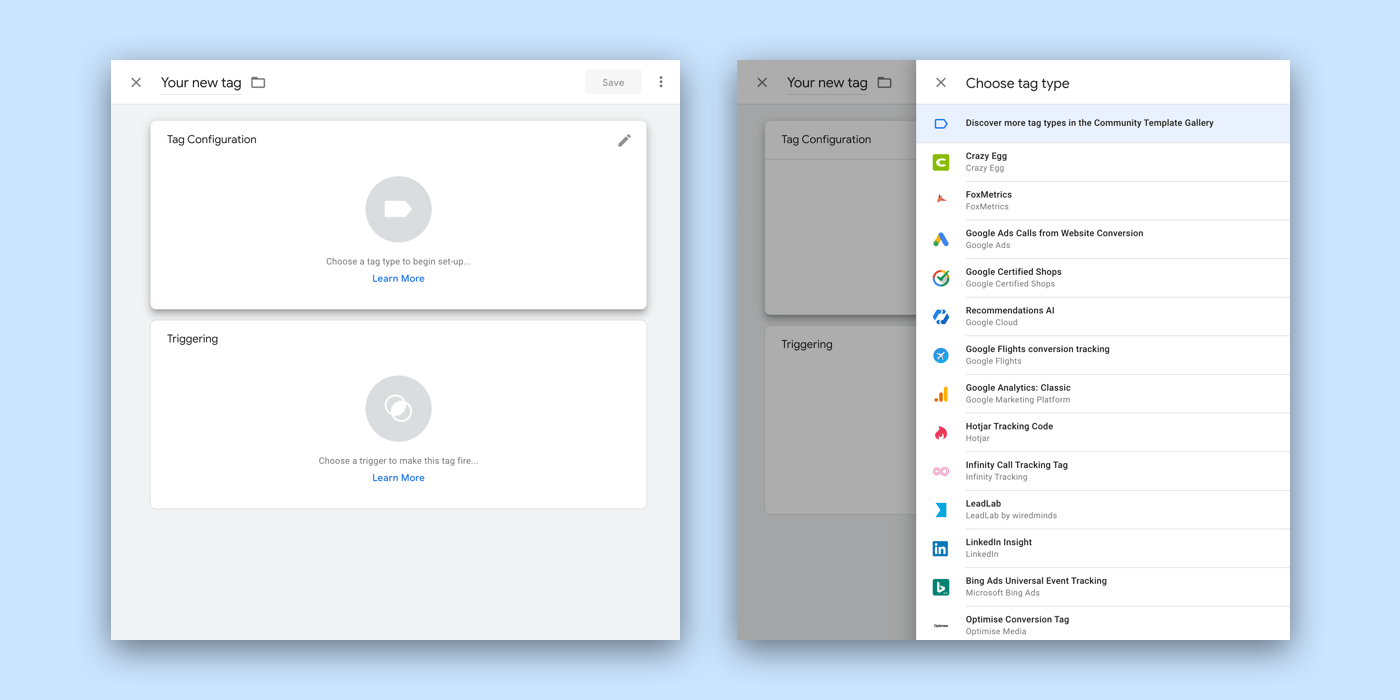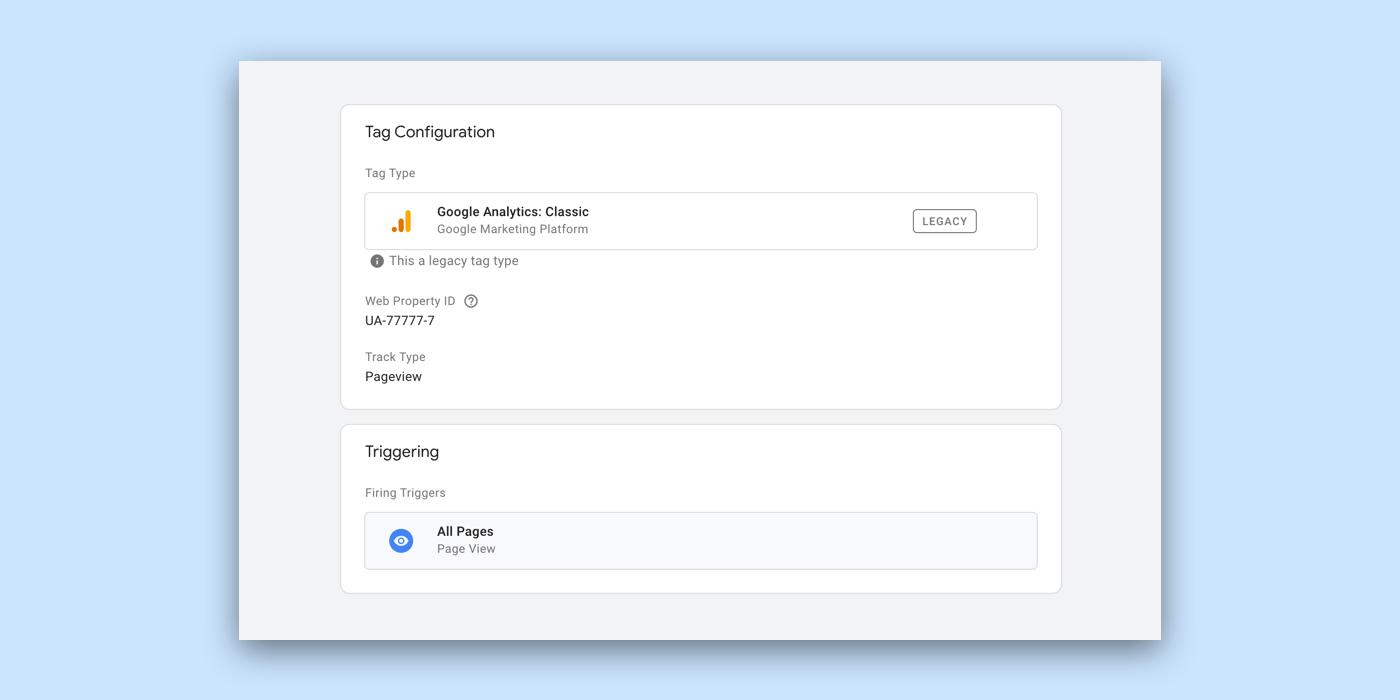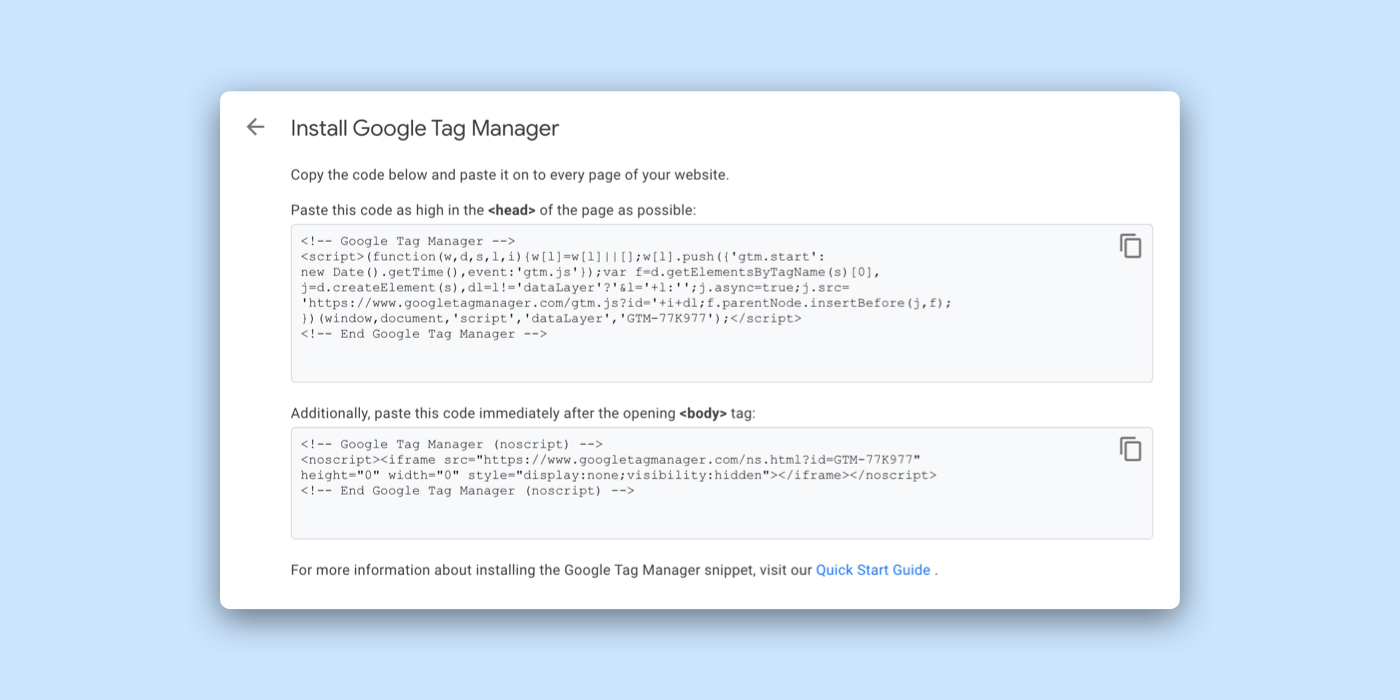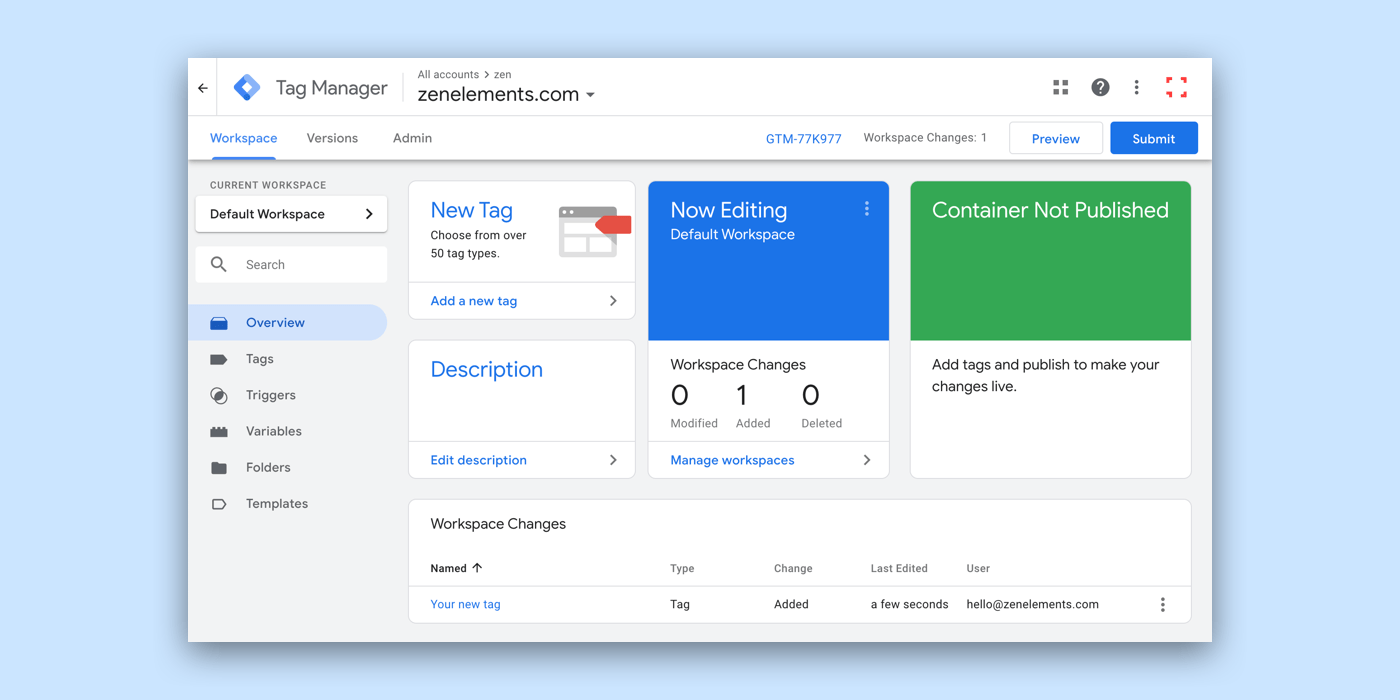Every business with a website or app needs to know how well that valuable asset is performing. That means adding tools like Google Analytics, HotJar, Facebook and Linkedin pixels, and so on, to gather information about what your visitors are doing.
These tools are added using snippets of code, often for every event that needs tracking, and that may require a developer and some coding work, every time.
Google Tag Manager to the rescue!
There is an easy way to take back control of adding these tags, to get past the technical barriers and enable marketing folk to move fast. Google Tag Manager (GTM for short!) is a 'tag management system', streamlining how data is collected from a website or app, all while being reasonably intuitive, even to non-technical types!
"Google Tag Manager is a 'tag management system' designed to enable marketers to easily gather and organise all the data they need about a website or app." - Google Inc.

Google Tag Manager is designed to enable the marketing team to quickly gather all the data they need, like how often a button is clicked, the conversion rate of a page, the performance of a new piece of content that's promoted on Linkedin, etc. All without requiring development work and expense.
How Google Tag Manager works (in plain English)
This article isn't intended as a technical guide and won't cover everything you need to know before getting stuck into GTM, but we should explain the basic concepts behind this beautiful system, in a way normal humans can understand:
Tags
The trigger needs a corresponding 'tag'. Think of a tag as the action that is performed when a trigger is set off. Typically, a tag is a snippet of code that collects and sends information to another 3rd party tool such as Google Analytics, HotJar, Full Story, etc.

Triggers
The basic premise of the system is that a 'trigger' detects an event on your website or app. You can tell it to look for a specific event or range of events on a single page, a section of pages or the whole website or app.

There's more to the system than this. Still, the core concept is to track visitor behaviour using a trigger and send that information to another marketing tool in a structured and controlled way — all without intricate development work!
How you might use Google Tag Manager – example use cases
Google Tag Manager is great for all sorts of marketing purposes, from measuring the impact of social media activity to what your latest content marketing is achieving.
Some examples of how you might use it:
- Adding an analytics tool like Google Analytics to your website
- Detecting how people interact with your 'Free Trial' button
- Measuring downloads for your eBook
- Adding the Facebook or Linkedin tracking pixel to a landing page that you have set up for a social media campaign
- Tracking the conversion rate of a new page
- Enabling AdWords remarketing on your landing pages
- Measuring engagement with a key feature in your iOS app
- Setting up heatmap tracking to collect detail on how your users behave on your site
7 Reasons You Should Start Using GTM
1) Future-proof your website or app
Using a single tool to manage the installation of every marketing tool you'll ever need in the future sounds like a smart plan to us! And because installation is so simple, Google Tag Manager can be easily migrated to new versions of a website or new releases of an app.
2) Give your website a speed boost
Google Tag Manager not only speeds up the time it takes to add new tools and tracking to a site, but it also enhances the performance of a website by allowing the content to load while it loads scripts in the background. A significant improvement to the usual alternative of loading lots of individual tracking codes at the same time.
3) Reduce website development spend
Google Tag Manager is added to a website with a single line of code, and then everything is controlled from one, simple online console.

4) Empower the marketing team
Marketers can add new tracking with ease as they create their marketing campaigns, or add new content. If your marketing team produce content in your business, you will surely need clear insights into what impact this has on your target audience and your profits.
5) Increase the security of your website
Google, as expected, takes security very seriously and has built-in tools to protect the businesses that rely on its tools, including this one. Access can be tightly controlled so that only certain approved people can add tracking to a website or app. No more open access to your website via FTP or another more vulnerable method.
6) Improve reliability
With built-in error checking, a smart preview mode to check everything is working and pre-built tags to automate the addition of common tags, Google Tag Manager tries very hard to remove any risk involved in the process of adding tracking. It also creates 'versions' of how each tag is set up, so it's straightforward to 'roll back' to a previous version if something does go wrong.

7) Enjoy a powerful marketing tool for free!
Google Tag Manager is a free tool yet can give you complete control of measuring and analysing everything that happens on your website or app. It does not require expensive training or subscriptions.
Ready to roll it out?
How to get started with Google Tag Manager
The initial setup of Google Tag Manager requires some technical know-how to get things working smoothly from the start. But for such a powerful tool, this initial configuration is very straightforward, with a single snippet of code required for your whole website, in place of maybe dozens of individual ones.
Visit Google Tag Manager to start creating your account, install your code snippet for the tool, and then the fun begins as you set up your triggers and tags to collect all that beautiful information!
Like to learn a bit more?
Google Tag Manager has a lot of advanced features and hidden benefits that we couldn't possibly cover here. Check out Google's Quick Start Guide or Developer Documentation for more detail.
Need a hand?
And, of course, you can get in touch with us to chat about how we can help you get the most out of Google Tag Manager.
Thanks for reading. Here's to many years of triggering and tagging your way to amazing insights into how people are using your website or app!